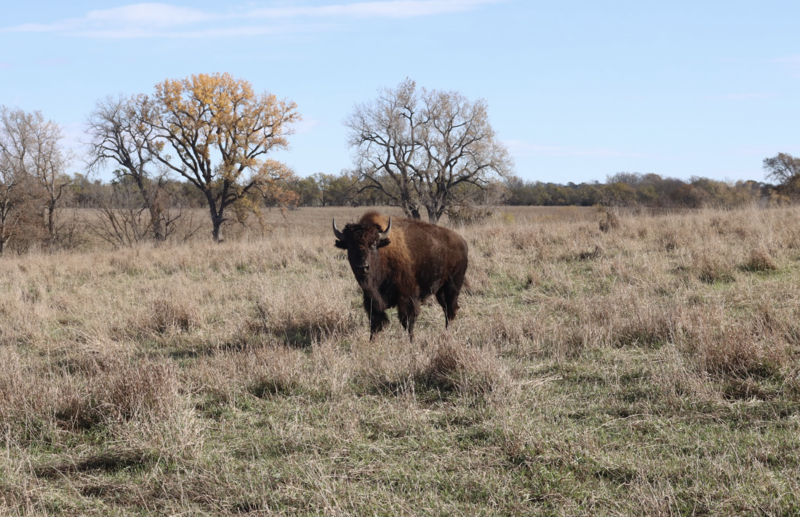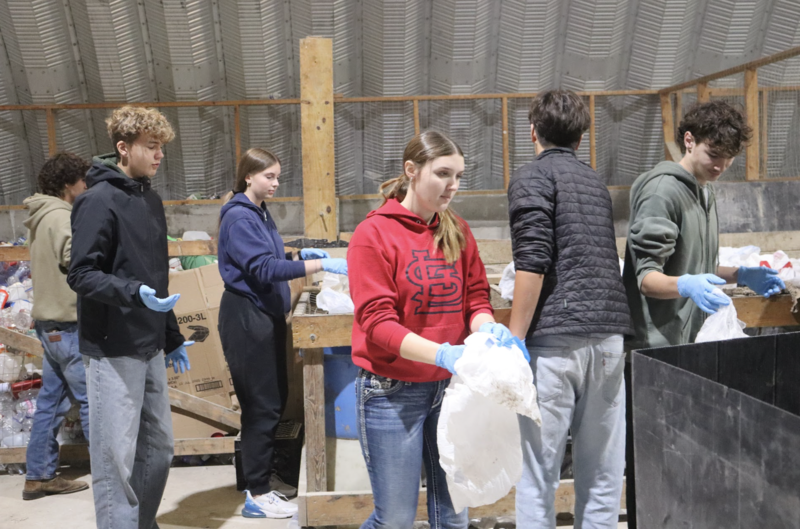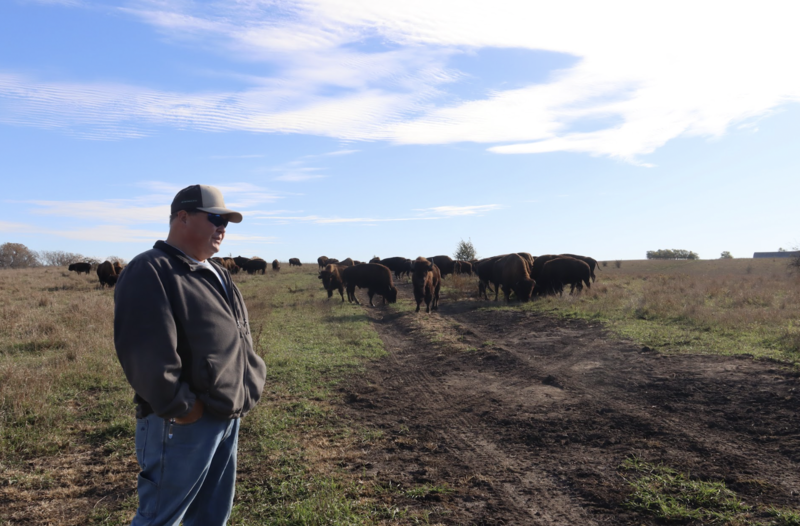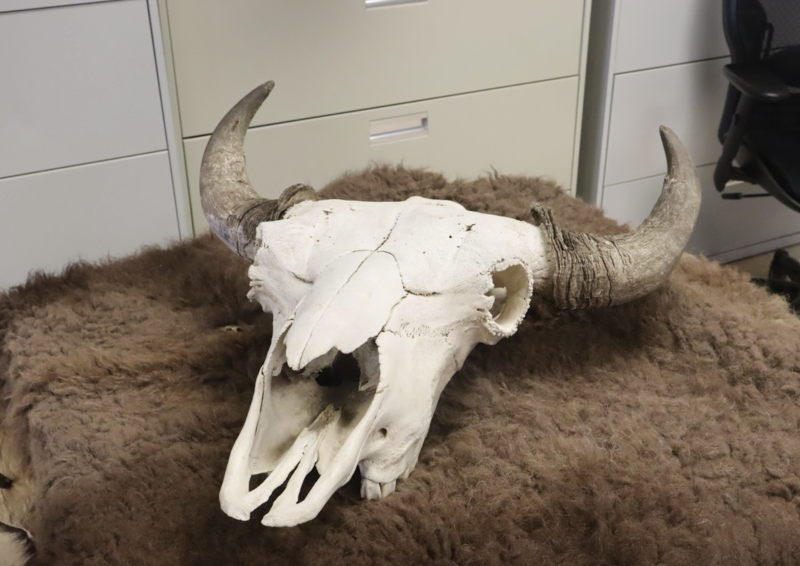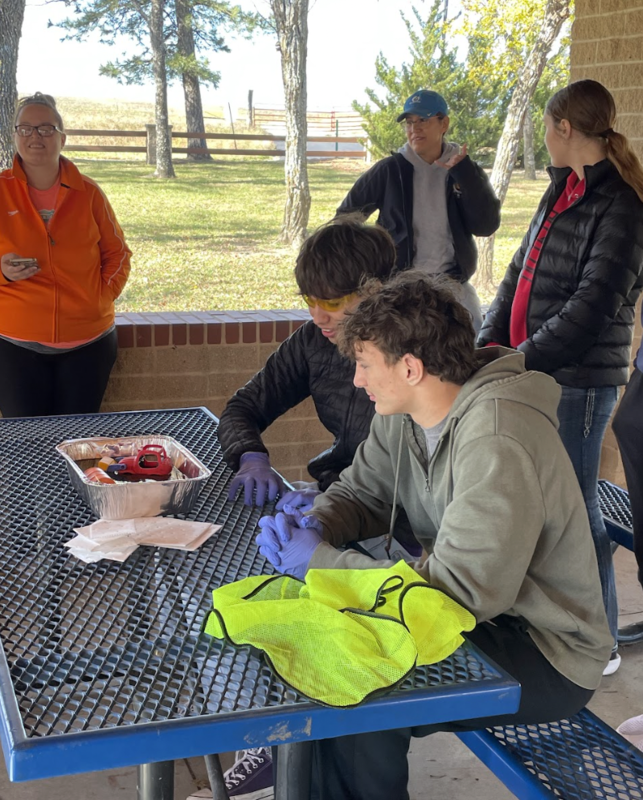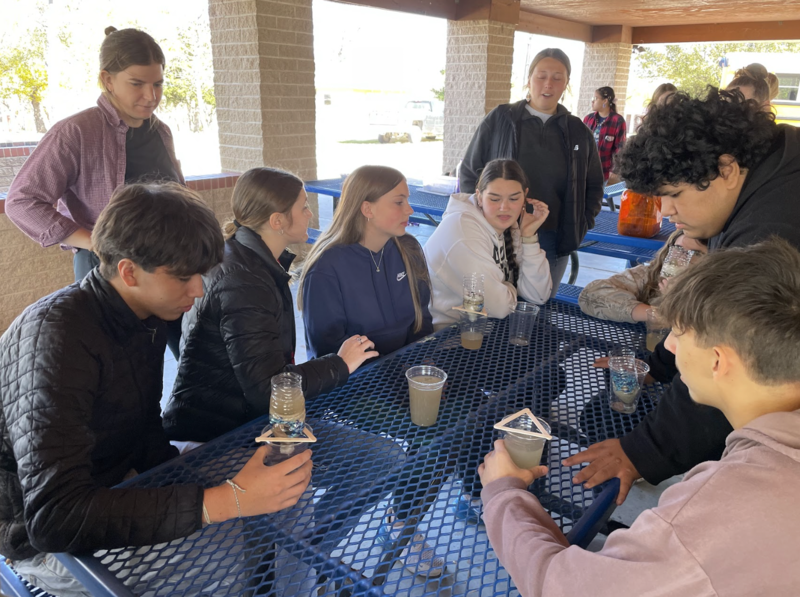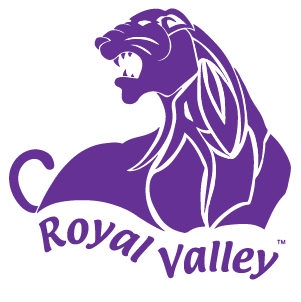On Friday, November 7th, Mrs. Swank’s Environmental Science students visited the Prairie Band Potawatomi Nation to learn about the Tribe’s efforts in environmental sustainability. Students had the opportunity to observe the buffalo herd, explore recycling and air quality initiatives, and tour the compost and waste management facilities.
A special thank you to all of the individuals who took time out of their busy schedules to speak with our students and share valuable insights on how we can work together to improve our environment.
Buffalo Tour – Led by Randy and Scott
Students began their visit with a guided tour of the buffalo herd, where they learned about the health and management of the animals. Randy and Scott explained that the herd is currently very healthy and at full capacity for the land available. The buffalo supply meat to both the casino and to tribal elders. To promote genetic diversity and prevent inbreeding, the herd managers are preparing to rotate the males. Each year, the herd produces around 200 calves, showing strong population growth.
This tour gave students an incredible opportunity to observe the buffalo up close and learn about their significance to the Tribe and ecosystem. Students also learned how to determine a buffalo’s age by examining its horns and were able to see the physical differences across various age groups.
Recycling & Air Pollution – Led by Osh and Billy
Osh guided students through the Tribe’s recycling process, explaining how the team services every home on the reservation, collecting and sorting recyclables by hand. Weekly sorting takes nearly 10 hours to prepare materials for shipment to processing facilities. The Tribe currently recycles cardboard, aluminum, tin, glass, and plastics. Students even had the chance to help sort recyclables themselves, getting hands-on experience in what it takes to manage recycling on a larger scale.
This activity helped students better understand how recycling at the community level compares to their own school recycling efforts, which occur every two to three weeks at both the high school and elementary school.
Games & Activities – Led by Emma, Cara, and Wakiyan
Students then participated in several interactive environmental simulations that represented different aspects of environmental science and management. They built water filters to test how clean they could make contaminated water, took part in a recycling sorting competition, and worked together to clean up a simulated oil spill—carefully removing toxins without further damaging the environment.
Next, students created a mini compost system and played a pollination game that demonstrated how pollinators help sustain ecosystems. These hands-on activities provided a fun, engaging way to understand the many interconnected jobs involved in protecting and improving the environment.
Compost & Wastewater Tour – Led by Marcus and Richard
The final stop was the Tribe’s compost and wastewater facilities, where students learned how sludge, the end product of wastewater treatment (mainly composed of dead bacteria), is transformed into nutrient-rich fertilizer. The compost process combines stillage, mulch, paper shreds, and cow and bison manure to create healthy soil.
Students also toured the wastewater treatment plant, observing how all water from the reservation is cleaned and recycled back into the environment. They saw firsthand the stages of purification—from the initial, untreated water to the clear, safe water released at the end of the process. The group also learned about the science and testing behind these systems, emphasizing how vital water reuse and safety are to sustainability.
